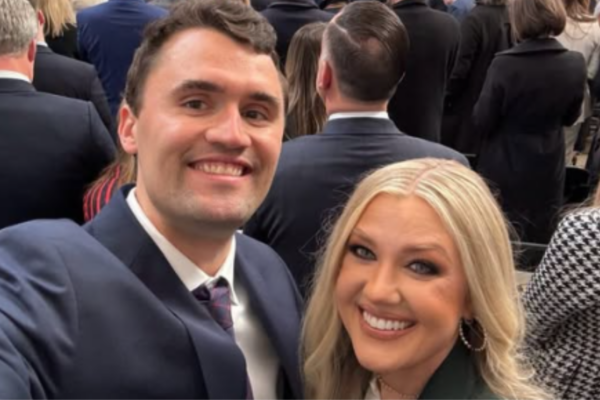
CPR, quick action by husband and bystander save Bay Area woman after cardiac arrest
Sheryl O’Loughlin of Santa Rosa remembers everything about that Friday night — the dinner, the wine, the company. It was late September, and she and her husband, Patrick, were staying in their recreational vehicle at Six Sigma Ranch in Lake County. Two other couples had joined them.
But their hike on Saturday? O’Loughlin remembers none of it. Dinner that night? Nothing of that either. When O’Loughlin, 58, tells the story of what happened the next morning, she relies on what others have told her because she has no memory of it.
“I woke up Sunday morning and we were getting the RV ready to leave. I don’t remember saying any of this, but all of a sudden I said, ‘I’m going to pass out,’” she said. Then she dropped. Her limp body was wedged between the couch and the wall.
Patrick pulled her free and later described seeing his wife’s breathing go from shallow to gasping agonal breaths, dangerously far apart.
“For a while there she was breathing erratically,” he said. “I was tapping her on the face, two or three minutes later she absolutely stopped breathing.”
At some point, someone in the group was able to reach 911.
“They said, ‘Let me listen to her breathing,’” Patrick remembered the 911 dispatcher saying. “After five seconds, they said, ‘This is too long, start chest compressions.’”
A Lifesaving Response
Decades ago, before a career in marketing, Patrick O’Loughlin was an EMT in New York. By his count, he had done CPR probably six times. Also by his count, none of those people survived.
As an assistant golf coach at Maria Carrillo High School, Patrick has had to regularly retrain in CPR but had not needed to use his training in about 25 years.
“I just jumped on top of her, on the floor basically of our RV. It was crazy,” he said. “I immediately started CPR and they said the ambulance was on its way.”
Two people from the O’Loughlins’ party ran the short distance to the Six Sigma tasting room to ask for help. Kristine McDermand, the tasting room manager, remembers a woman running through the door asking her to call 911.
There was some worry that the cell service at the RV was unstable and that directions to the remote, rural location might not go through.
“I gave her my cellphone,” McDermand said. And, perhaps more crucially, “I told her I know CPR.”
“I actually was a personal trainer for like five years, and that required CPR and automated external defibrillator (AED) training for the gym I worked for, so I had gone through the training,” she said. “I had never had to use it. I am very thankful for that training.”
Following instructions coming over the phone from the 911 operator, McDermand switched places with Patrick when he tired.
“He was the rock star,” she said.
Signs of Life
The two went back and forth, performing hands-only CPR, all the while receiving information and instructions from the 911 dispatcher.
“He stayed on the line the whole time,” Patrick said. “The guy just said, ‘Keep going. Are you tired? You can switch out. The ambulance is on the way. Keep going.’ He was great. He was like, ‘I’ll stay on the phone with you.’”
When the ambulance arrived, emergency medical technicians used an AED to shock O’Loughlin’s heart.
“She started breathing on her own,” Patrick said. “That was a great sign.”
Officials ordered a helicopter for O’Loughlin, and she was then airlifted to Adventist Health St. Helena.
A Severe Heart Attack
O’Loughlin was sent immediately into surgery, where it was discovered she had suffered an ST-elevation myocardial infarction, or STEMI heart attack. These tend to be more severe and dangerous compared to other types of heart attacks.
O’Loughlin suffered an anterior STEMI, which is even more dangerous because it affects the largest artery that provides blood flow to the heart.
Additionally, O’Loughlin showed signs of cardiac arrest — loss of consciousness, ragged breathing, and the EMTs’ need to use AED paddles to shock her heart.
She spent the night in the intensive care unit.
The next day, Patrick worried her brain might be damaged after being deprived of oxygen. He needn’t have.
Two days later, O’Loughlin was “100% normal,” Patrick said — an incredible recovery considering what she had gone through.
Understanding the Critical Window for Help
A STEMI heart attack often indicates total blockage in one of the heart’s main arteries. This can mean the muscle in the ventricle is dying and signals to doctors that reopening the artery and restoring blood flow is crucial to prevent or limit permanent damage.
In cardiac arrest cases, an electrical failure in the heart causes an irregular heartbeat, meaning the heart can’t pump blood to the brain, lungs, and other organs. People in cardiac arrest lose consciousness and pulse.
Approximately 90% of those who suffer from out-of-hospital cardiac arrest die, according to The American Red Cross. The chance of survival decreases by 10% for every minute that immediate CPR and use of an AED are delayed.
O’Loughlin was exceedingly lucky that both her husband and McDermand at Six Sigma understood and knew how to perform CPR.
Learning hands-only CPR is about understanding technique — where to place hands, how hard to push, what rhythm to use — but also about having the confidence to step into scary situations, said Dave Sieburg, regional communications manager for the Red Cross.
“What The Red Cross is really trying to get across more than anything is that hands-only CPR is something everyone can do and learn,” he said.
Patrick O’Loughlin is proof positive that regular recertifications work.
The American Red Cross offers regular training sessions, both online and in person.
Warning Signs for an Avid Athlete
Sheryl O’Loughlin describes her heart attack as completely unexpected. Her family does not have a history of heart problems. She’s an avid exerciser.
Her personal health routine melds with her professional profile — she’s the former CEO of Clif Bar, Inc., and organic drink company REBBL, Inc., and was a co-founder of organic food company Plum, Inc. She is currently co-founder of the J.E.D.I. Collaborative and Women on Boards Project.
“I’m a pretty healthy, active person,” she said. “I work out almost three hours a day.”
But there were hints that something might not be right, she said.
“I had been having, for about a year, maybe two years, some weird sensations, sometimes a little burning,” she said, indicating her chest area.
Then in July, she felt that sensation while on a home exercise machine. She stepped off. She tried to begin again, but the feeling came back, so she went to turn off the machine and passed out.
Her fall caused a compression fracture in her back and broke a rib. She underwent tests, including an echocardiogram and an angiogram.
There were signs of some blockage in her blood vessels, but O’Loughlin said that once her injuries from the fall healed, she was given the all-clear to resume exercise and get back to her life.
So she did. Including hikes in Lake County with friends.
“Everything was fine,” she said.
Get Trained, Be Prepared
By Patrick O’Loughlin’s estimation, until that morning in late September, he had not performed CPR in a quarter century. But his muscle memory was intact because of the regular training courses required of a high school coach.
It was what he needed.
“People think, ‘I don’t know if I’m the guy for the job,’ but you are the person for the job. Everyone can do these actions,” he said.
For McDermand, there was a feeling of gratitude when she learned that O’Loughlin survived, because when she left in an ambulance that morning, the outcome was unclear.
“I was so happy to hear that and to get to be there when they needed it,” she said.
Since that September morning, the O’Loughlins have bought an AED device for their Santa Rosa home, and Sheryl O’Loughlin is planning to take a CPR class.
O’Loughlin, who has returned to her exercise routine, believes her fitness helped her, but that her life was saved by her husband’s and McDermand’s knowledge of CPR and their willingness to step into the fray in a frightening moment.
“Everyone I have told the story to, they said, ‘Patrick is a freaking hero,’” she said. “I’m stunned because I should not be here. It’s weird, I feel like living a second life.”
—
You can reach Staff Columnist Kerry Benefield at 707-526-8671 or [email protected]. On Instagram: @kerry.benefield.
https://www.mercurynews.com/2025/11/07/santa-rosa-sheryl-oloughlin-heart-attack-cpr/
You may also like
相关资源
You may be interested
Globe bets on prepaid fiber, sets expansion
No content was provided to convert. Please provide the text...
Bragging rights up as Samal makes 5150 debut
A stellar Open division field will be shooting for the...
DigiPlus launches P1-M surety bond program
MANILA, Philippines — DigiPlus Interactive Corp. has partnered with Philippine...
 The New York Times
The New York Times
- From the Shadows to Power: How the Hindu Right Reshaped India 2025 年 12 月 26 日 Mujib Mashal, Hari Kumar and Atul Loke
- This May Be Our Last Chance to Get It Right in Venezuela 2025 年 12 月 26 日 Jimmy Story
- What to Know About U.S. Military Action in Nigeria 2025 年 12 月 26 日 The New York Times
- Myanmar’s Health Crisis Spills Over Borders 2025 年 12 月 26 日 Verena Hölzl and Lauren DeCicca
- 5 Key Moments in the Rise of India’s Hindu-First Powerhouse 2025 年 12 月 26 日 Mujib Mashal and Hari Kumar
- What to Know About ISIS Terror Attacks 2025 年 12 月 26 日 Eve Sampson
- Death Toll in UPS Plane Crash Rises to 15 2025 年 12 月 26 日 Francesca Regalado
- California Prepares for More Rain After a Soggy Christmas 2025 年 12 月 26 日 Soumya Karlamangla and Alexander Nazaryan
- U.S. Strikes ISIS in Nigeria After Trump Warned of Attacks on Christians 2025 年 12 月 26 日 Helene Cooper, Saikou Jammeh and Eric Schmitt
- Trump Administration Emphasizes Religion in Official Christmas Messages 2025 年 12 月 26 日 Ashley Ahn



Leave a Reply